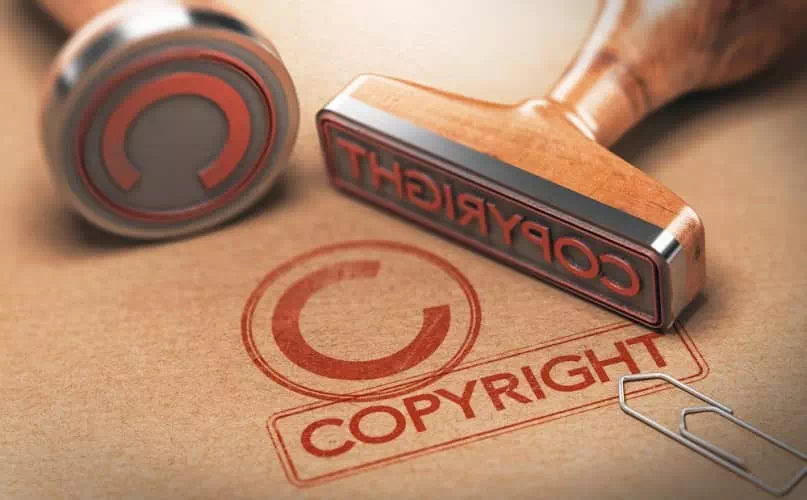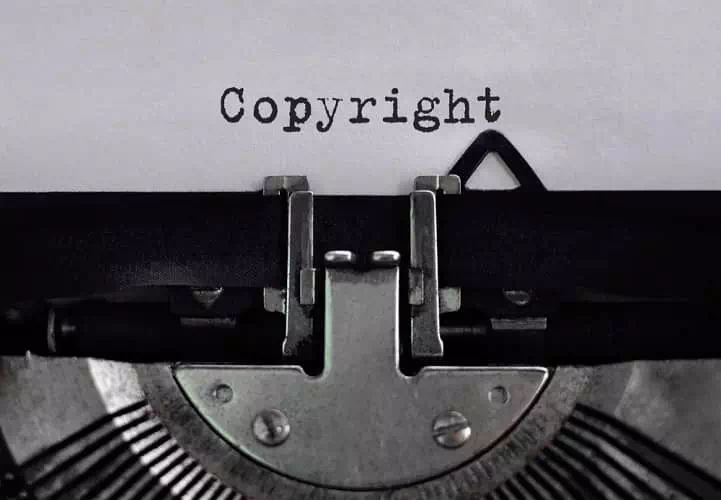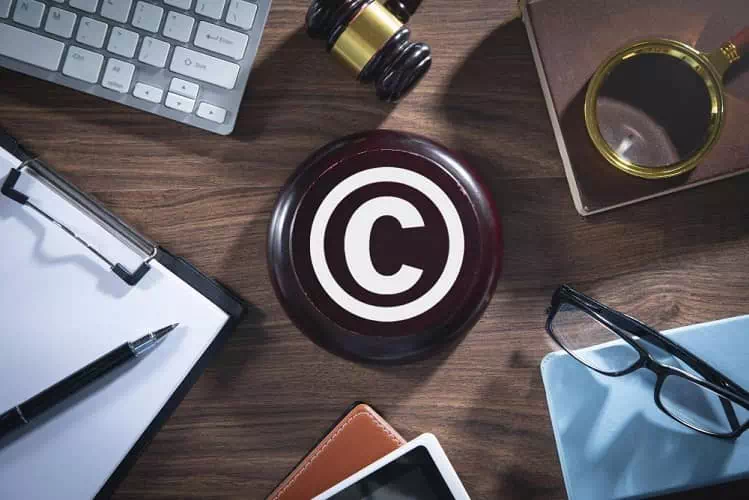Copyrighting photographs is of utmost importance for photographers. By securing copyright protection, photographers establish their ownership and authorship of their work, ensuring that they have exclusive rights over their photographs. This allows them to control how their photographs are used, preventing unauthorized reproduction, distribution, and public display.
Copyright protection also facilitates licensing opportunities, enabling photographers to generate revenue from their creative endeavors. Moreover, it preserves the integrity of their work by preventing unauthorized modifications. The copyright process involves the steps which help to get legal protection for creative works. Registering the work with the appropriate copyright office provides additional advantages.
This involves submitting an application, including information about the work, and paying the required fee. The copyright office then examines the application to ensure it meets the necessary criteria for copyright protection. Copyright duration varies, typically lasting for the creator’s lifetime plus a designated period.
What is Copyright Law?

Understanding copyright law helps photographers to save their creative rights and maximize the benefits of their work. It gives the right to reproduce the work. The work must be independently created with a certain level of creativity for copyright. Copyright establishes ownership and control over the use of the work. This ownership can be transferred through contractual agreements. Copyright owners have the right to distribute the work, whether by selling or lending copies.
They also have the right to publicly display the work, showcasing it in galleries, presentations, or online platforms. Copyright protection is automatic upon the creation of the work, but registering the photograph with the copyright office can provide additional benefits and legal advantages. Understanding the eligibility criteria for copyright protection helps photographers protect their creative works and assert their rights over their photographs.
Preparing to Copyright a Photograph

Preparing to copyright a photograph involves several essential steps to ensure the process goes smoothly
Ownership and authorship
Ownership and authorship are fundamental aspects of copyrighting a photograph. Generally, the photographer who takes the photograph is considered the initial copyright owner. But it is crucial to clarify ownership and authorship before proceeding with copyright registration. Clear agreements or contracts can help establish ownership.
Originality and creativity requirements
Originality and creativity are key requirements for the copyright protection of a photograph. Originality means that the photograph is independently created. It cannot be a copy of someone else’s work. By meeting the originality and creativity requirements, photographers can secure copyright protection for their unique and creative works.
Fixation and tangible form
Fixation refers to capturing the photograph in a tangible medium. This means that the photograph must be saved or stored in a physical or digital format (like JPEG or PNG) that can be perceived, reproduced, or communicated. Examples of tangible forms include printed copies, digital files on a computer, or memory cards.
Steps to Copyright a Photograph

Step 1: Creation of the photograph
The first step in copyrighting a photograph is the creation of the work itself. The photograph must be an original creation. It should reflect the photographer’s individual expression and choices. Copyright protection is automatic upon the creation of the photograph. It means you have certain rights over your work from the moment it is created.
But registering your photograph with the copyright office provides additional legal benefits. Registration is not mandatory. But it is highly recommended as it strengthens your legal position and offers greater protection for your work.
Step 2: Understanding copyright registration
Benefits of Registration: Registering your photograph with the copyright office offers several important benefits. Through it you can get a public record for your copyright claim. it helps to prove ownership in case of copyright disputes. Additionally, registration provides a stronger deterrent effect against potential infringers.
You must follow some eligibility criteria to register your photograph. the photograph must be an original work. The physical or digital medium should be used to capture the photo. You also have to complete an application for copyright registration.
Step 3: Gathering necessary information
When preparing to copyright a photograph, it is important to clearly identify the photograph. This includes providing a descriptive title or name for the photograph. This description helps in distinguishing it from other works. Determining the date of creation is another essential thing of copyright. It establishes the duration of copyright protection. It is the date when the photograph was first fixed in a tangible form.
Step 4: Filing the copyright application
There are various methods available for submitting a copyright application. The most common methods are online filing and physical mail. Online filing allows for electronic submission of the application. Whereas, physical mail involves sending a printed copy of the application form and accompanying materials to the copyright office.
Copyright registration typically involves payment of application fees. The copyright office’s website will provide information on the applicable fees. Besides this, you will need to complete a copyright application form. On that form, you have to give a title for your work, authorship information, and date of creation.
Step 5: Copyright examination and processing
Timeline and Potential Delays: After submitting your copyright application, the copyright office will examine and process it. The timeline for examination and processing can vary depending on the jurisdiction and workload of the copyright office. It is advisable to check the copyright office’s website or guidelines for estimated processing times.
During the examination and processing of your copyright application, you may receive correspondence from the copyright office. This correspondence includes requests for additional information for your application. You Should maintain clear and open communication with the copyright office. It can help resolve any issues or queries efficiently and ensure the smooth progress of your application.
Step 6: Copyright registration certificate
Once your copyright application has been examined and approved, the copyright office will issue a copyright registration certificate. This certificate serves as official confirmation of your copyright registration. The copyright registration certificate may be issued electronically or in physical form. In the case of electronic issuance, you may receive a digital certificate.
While physical certificates are mailed to the copyright owner’s address. This certificate holds significant importance in asserting your rights as the owner of the copyrighted photograph. It provides tangible evidence of your copyright registration. It is advisable to keep the copyright registration certificate in a safe place and make copies for reference.
You may also read- What is Watermark?
Copyright Infringement and Enforcement

Copyright infringement occurs when someone violates the exclusive rights granted to the copyright owner without obtaining proper authorization. Someone can do that both intentionally and unintentionally. So the copyright owner should monitor and protect their rights. Copyright owners can enforce their rights in many ways. Let’s explore some ways of enforcement:
Cease and Desist Letters: Cease and desist letters enable you to notify the infringing party about the copyright violation. Owners use this letter as a warning for the infringing party. It prompts the infringer to stop the infringement voluntarily.
Negotiation and Settlement: In some cases, copyright owners may choose to engage in negotiation and reach a settlement with the infringing party. This may involve discussions on licensing the photograph and reaching an agreement to resolve the infringement dispute amicably.
If the above options fail to stop the copyright infringement issue, copyright owners can use some legal remedies. They can immediately stop the unauthorized use of photographs by seeking an injunction from a court. it prevents future unauthorized use of the copyrighted photograph.
Copyright Alternatives and Licensing Options

Copyright alternatives and licensing options provide photographers with various ways to manage the usage and distribution of their creative works.
Creative Commons Licenses: Creative Commons licenses provide an easy approach to copyright licensing. Through these licenses, copyright owners permit others to use their photographs under certain conditions.
Royalty-Free and Stock Photography: Royalty-free and stock photography enable you to use pre-existing photographs. Royalty-free means that a one-time fee is paid for the right to use the photograph without additional royalties. These options are cost-effective options to access a large library of photographs.
Exclusive and Non-Exclusive Licensing: Exclusive licensing enables the photographer to grant the license of the sole right to use the photograph. By Non-exclusive licensing, the photographer can license the same photograph to multiple parties simultaneously. Though exclusive licensing requires higher fees but provides more control over the use of the photograph.
You may also read– Copyright Free Vector Images Sources.
International Copyright Considerations

International copyright considerations are crucial for photographers who wish to protect their creative works on a global scale. There are different copyright protections in different countries. Each country has its own requirements. Photographers should understand the specific copyright laws of a country.
International copyright treaties and agreements play a significant role in copyright laws across countries. Treaties like the Berne Convention, the Universal Copyright Convention, and the Agreement on Trade-Related Aspects of Intellectual Property Rights (TRIPS) establish minimum standards for copyright protection.
Conclusion
Copyright provides strong and legal protection to original and creative works. Copyright registration is not mandatory for protection, but it offers additional benefits such as public notice and the ability to pursue legal remedies. Copyright protection grants photographers exclusive rights to reproduce, distribute, display, and monetize their work. It helps to prevent unauthorized use, copying, and infringement of works.
So, photographers should prioritize copyrighting their work as it ensures legal protection and offers exclusive rights. It enables them to control the use and distribution of their photographs.
Frequently Asked Questions

1. Can I copyright a photograph taken by someone else?
No, you cannot copyright a photograph taken by someone else. Copyright is automatically granted to the original author or creator of a work. That’s why you should obtain proper permissions before using or reproducing their photographs.
2. How long does copyright protection last?
Copyright protection can last in different duration. Its duration depends on the place and type of the work. In general, the duration of copyright lasts for the life of the author plus a certain number of years after their death.
3. Do I need to register my photograph to have copyright protection?
No, copyright protection exists automatically upon the creation of a photograph or any other original work. In most countries, registration is not necessary to have copyright protection. But registering your photograph with the copyright office offers additional benefits.










